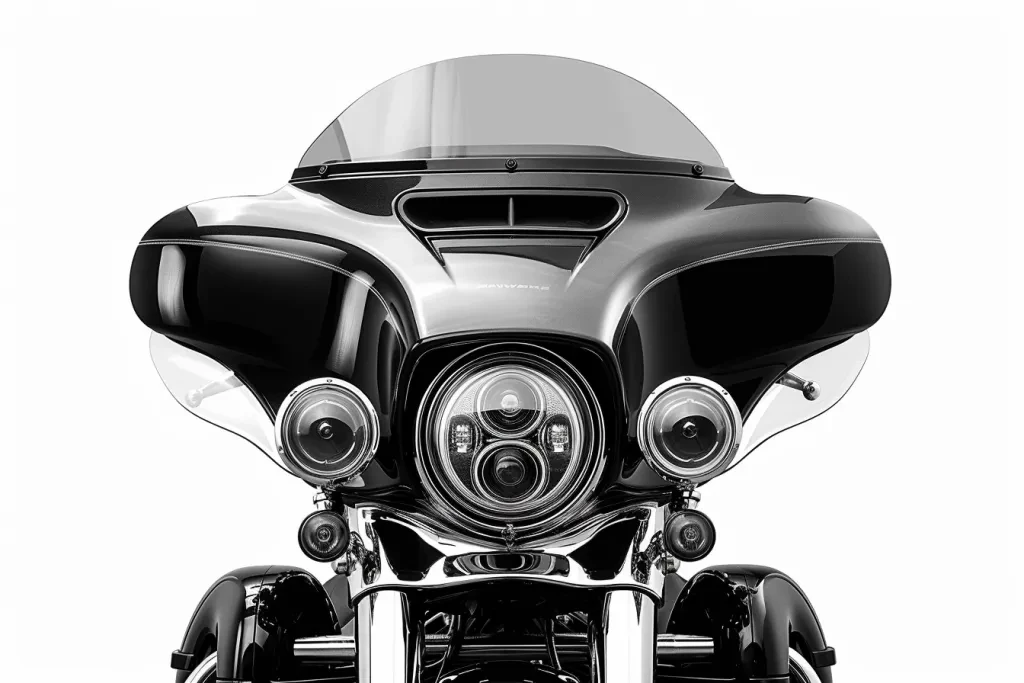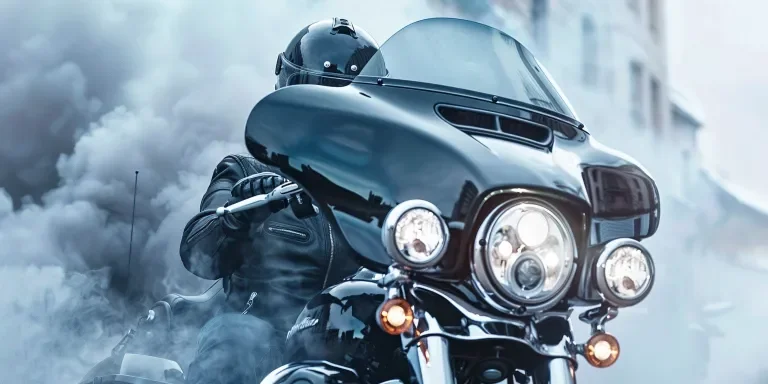When it comes to enhancing the look and performance of your vehicle, few accessories play as pivotal a role as fairings. These sleek, aerodynamic components not only elevate your ride’s aesthetic appeal but also improve its aerodynamic efficiency. In this guide, we’ll explore the fairing definition, its functions, and everything you need to know to make an informed choice for your vehicle.
Table of Contents:
– What is a fairing?
– What does a fairing do?
– How to choose a fairing
– How long do fairings last?
– How to replace a fairing
– How much are fairings?
What is a fairing?

A fairing is a specially designed panel or cover usually made from metal, plastic, or composite materials, fitted on vehicles, primarily motorcycles, and aircraft, to reduce air drag. The primary function of a fairing is not just limited to aesthetics; it plays a crucial role in enhancing the vehicle’s aerodynamic performance. By smoothing the airflow over surfaces that would otherwise be exposed and turbulent, fairings help in reducing drag, which can be pivotal in both performance and fuel efficiency.
The concept of fairings originated in the aviation industry, where minimizing air resistance is a critical factor in achieving optimal flight efficiency and speed. This concept was later adapted to motorcycles and other vehicles, where the principles of aerodynamics also apply. Today, fairings are a common sight not only in racing but also in consumer vehicles, where they contribute to a sleek, streamlined appearance and improved performance.
Fairings come in various shapes and sizes, designed to fit different parts of a vehicle. For motorcycles, for example, they can range from full fairings that cover most of the front section, including the headlight and sides, to half fairings that protect just the lower part of the motorcycle. Each type serves a specific purpose, not only in terms of aerodynamics but also in protecting the rider from wind, debris, and the elements.
What does a fairing do?

The primary role of a fairing is to reduce air drag, which is the resistance a moving object encounters from the air in the direction of its motion. By streamlining the shape of the vehicle, fairings reduce this resistance, allowing for smoother and faster movement with less fuel consumption. This aerodynamic efficiency is particularly beneficial in racing and high-speed travel, where even minor reductions in drag can lead to significant performance improvements.
Beyond aerodynamics, fairings also serve to protect the vehicle and the rider from the elements. For motorcycles, this means a reduction in wind blast to the rider, which can reduce fatigue on long rides. Fairings also help in deflecting road debris, rain, and other environmental factors, making for a safer and more comfortable ride. For vehicles in general, fairings can protect critical components from damage caused by road debris and reduce wear and tear.
Fairings also play a significant role in the aesthetics of a vehicle. They offer a sleek, streamlined look that can be customized to suit individual tastes. For many riders and drivers, the ability to personalize their vehicle with different styles and colors of fairings is a major appeal, allowing for a unique and visually striking appearance on the road.
How to choose a fairing

Choosing the right fairing for your vehicle involves considering several factors, including the type of vehicle, desired aerodynamic benefits, protection needs, and aesthetic preferences. For motorcycles, deciding between a full, half, or quarter fairing will depend on the level of aerodynamic performance and protection you’re looking for. Full fairings offer the most in terms of aerodynamics and rider protection but can be more expensive and heavier, potentially affecting handling.
Material is another important consideration. Fairings made from ABS plastic are lightweight, durable, and relatively inexpensive, making them a popular choice for many riders. Composite materials like carbon fiber offer superior strength and weight savings but come at a higher cost. Metal fairings, while less common, provide a unique look and can be more durable but are typically heavier and more expensive.
Fit and compatibility are also crucial. A fairing must be compatible with your vehicle’s make and model to ensure proper fitment and functionality. Custom fairings may offer more personalization options but require careful selection to ensure they match your vehicle’s specifications and don’t interfere with its performance or safety features.
How long do fairings last?

The lifespan of a fairing largely depends on the material it’s made from, how well it’s maintained, and the conditions it’s exposed to. ABS plastic fairings, for example, can last many years if properly cared for, though they may become brittle or fade if exposed to harsh sunlight for extended periods. Composite materials like carbon fiber are known for their durability and resistance to wear, potentially lasting the lifetime of the vehicle with proper care.
Regular maintenance, including cleaning and inspecting fairings for damage, can significantly extend their lifespan. Minor cracks or scratches can often be repaired, preventing further damage that could necessitate a full replacement. For vehicles frequently exposed to harsh conditions or high speeds, more frequent inspections and maintenance may be necessary to ensure the fairings remain in good condition.
How to replace a fairing

Replacing a fairing involves several steps, starting with selecting the correct replacement that fits your vehicle’s make and model. Once you have the right fairing, the process generally involves removing any fasteners or brackets holding the old fairing in place, carefully detaching it from the vehicle, and then fitting the new fairing using the same fasteners or brackets. It’s important to handle fairings gently during both removal and installation to avoid damage.
For those not comfortable performing the replacement themselves, professional installation is recommended. This ensures the fairing is properly fitted and secured, minimizing the risk of damage or detachment while the vehicle is in motion. Whether you choose to replace the fairing yourself or have it done professionally, following the manufacturer’s instructions and recommendations is key to a successful installation.
How much are fairings?

The cost of fairings can vary widely depending on the material, size, and design. Basic ABS plastic fairings for motorcycles can start at a few hundred dollars for a set, while high-end composite materials like carbon fiber can run into the thousands. Custom designs or paint jobs can also add to the cost, as can professional installation.
When considering the cost of fairings, it’s important to weigh the benefits they offer in terms of protection, performance, and aesthetics against the initial investment. In many cases, the improved aerodynamics, fuel efficiency, and enjoyment of a more personalized and protected ride can justify the expense.
Conclusion: Fairings are a versatile and valuable addition to any vehicle, offering benefits that range from improved aerodynamics and protection to enhanced aesthetics. Understanding the fairing definition, its functions, and how to choose the right one for your needs can help ensure you get the most out of this investment. With proper care and maintenance, fairings can last for many years, making them a worthwhile enhancement to any ride.




